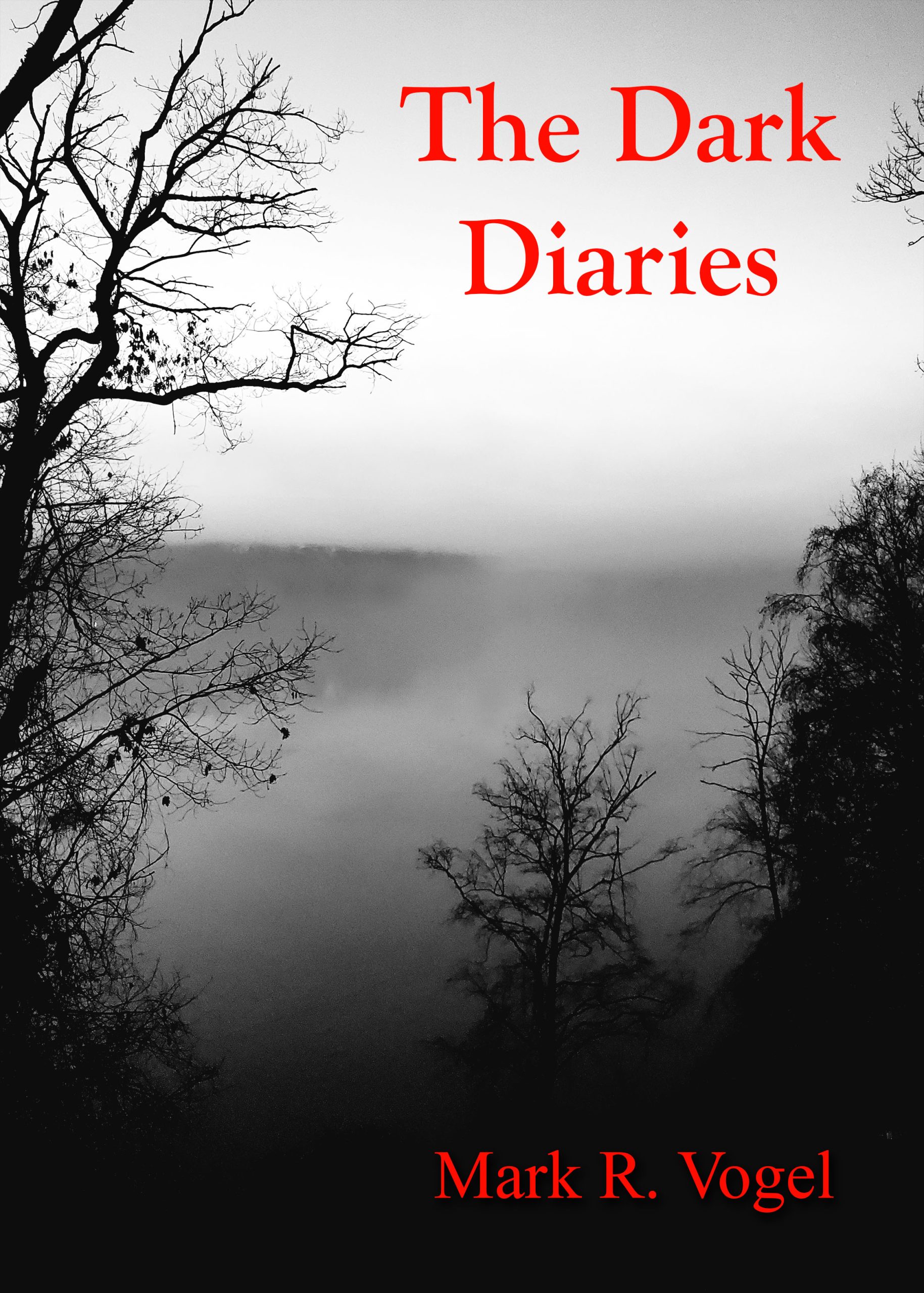Part 1: Story 4 – The Devil’s Hole
Long before the European settlers came in the 1700’s, the Seneca Indians inhabited the land around the Falls, which they considered to be the home of deities known as the Great Spirit of Thunder Waters, He-No the Thunderer, and Lelawala, the Maid of the Mist. The area around the Three Sisters Islands (three small islands off the west side of Goat Island) was the location of many sacrifices to the gods, or spirits. About four miles downriver is the three hundred foot deep gorge called the Devil’s Hole, also named by the Seneca Indians as they believed that it was the home of the “Evil One” who took the form of a giant snake. The Senecas warned travellers about the location, but not everyone listened to them. In 1687 the French explorer Robert de la Salle was murdered by the members of his own expedition in the Devil’s Hole.
Almost a century later, the deaths continued in a brutal fashion. For those not familiar with the Conspiracy of Pontiac, the Devil’s Hole Massacre was one of the most brutal events recorded from that time. In 1755, Pontiac, an Indian Chief and leader of the Ottawa, Ojibwa and Potawatomi, was on his way to occupy Michilimackinac and other allied French Forts. After meeting Major Rogers, he also allowed the English troops to pass untouched as long as they were shown respect by the British. By the time Pontiac and his men reached the Forts, he discovered that he was given empty promises by the French and they were no longer welcome in the area. The English also intruded and deprived them of their hunting grounds by building encroaching English settlements without telling them.
In 1763 the Indian “prophet” preached of a union of Indians to expel the English. Taking advantage of the religious fervour at the time, he organized a simultaneous attack on English Forts, careful of planning it for a certain phase of the moon. About five hundred Senecas surprised a wagon train escorted by twenty-four English soldiers. They were ambushed and driven over the edge of the Devil’s Hole. A party was sent from Fort Niagara to rescue them and they too, were nearly annihilated. In all, eighty scalped and otherwise mutilated bodies were recovered by the few rescuers left who were sent in vain. Horses and still-screaming victims were thrown into the gorge and the nearby stream, still known as Bloody Run. (A few years later, Pontiac was killed in Cahokia, IL outside of St. Louis by an Indian who was bribed by and Englishman and a new, bitter war began with the Pontiac followers.)
In 1892 construction began on a railway that would allow the Great Gorge Trolley to take passengers back and forth from Queenston to Chippawa. Of course, this meant that the Trolley passed by the Devil’s Hole every day. On July 1, 1917, twelve tourists died and twenty four tourists were injured when a trolley filled with passengers derailed and plunged into the Niagara River at the upper end of the Whirlpool Rapids just below the Whirlpool Bridge. The cause of this tragic accident was as a result of heavy rains undermining the rail bed. The trolley rolled down a thirty foot embankment coming to rest upside-down on several submerged rocks before rolling on to its side and into the raging river. On September 17, 1935 at 2am, five thousand tons of rock fell approximately 150 feet north of the Whirlpool Bridge, destroying more than 200 feet of track and rail bed. This was that largest rock fall to plague the Great Gorge Route. It forced the Great Gorge Route to close for business, and the line along the base of the Niagara Gorge on the American side was never repaired or reopened.
Over the years, many “accidents” have happened in and around the Devil’s Hole. Some have been suicides, murders, and some were said to be “slip and fall” mishaps. Police have reported evidence of modern Satan-worshipping activity, perhaps taking advantage of the convenient name of the location.
Perhaps you should go and visit for yourself? The New York State Parks website invites you to the park for a relaxing afternoon: “Devil’s Hole State Park overlooks the lower Whirlpool rapids. A wildly beautiful walkway leads down from the park along the turbulent Niagara River 300 feet into the wooded gorge and offers an up-close, spectacular view of the gorge’s rapids. Devil’s Hole has picnic areas, hiking, and nature trails. It is one of the most popular spots for fishermen.”
G and I went to the Devil’s Hole, which was very easy to find along the Moses Parkway in NY. As soon as I saw it, I was impressed. I also knew my entire afternoon was going to consist of going down and back up stairs. Many, many stairs. They start out pretty even with a railing, but that doesn’t last long. About half way down, I had to stop for a break. The steps are large uneven stones, and there’s nothing to hold on to so you have to keep your balance. There were a lot of joggers and some young families that only went partway down. I didn’t go down the very last fifty steps, but G told me they were the steepest of them all, and he was able to climb down by the water and take some pictures.
It was extremely beautiful. I was able to take breaks and sit on the rocks in the shade and make a couple of notes to the sound of the rushing water. When it was time to go back up I knew I was going to have to make resting stops along the way, and I decided to count the steps. It’s a rough number since I wasn’t sure when to count jutting rocks or slopes as steps, but I counted three hundred and thirty, and add G’s bottom forty or fifty to that total for an idea of the depth of the Devil’s Hole. You might also find a sign pointing towards a Limestone Cave, which is supposed to be the home of the Evil Spirit. Unfortunately I was unable to climb over to see it myself. Once we were back up at the top and looking down, you can only see a fraction of the full distance, but I know that anyone who was pushed or fell over that edge could not survive.
State Park website for the Devil’s Hole: http://nysparks.state.ny.us/parks/info.asp?parkID=28
Part 1: Story 5 – Hawley-Breckenridge House
The Hawley-Breckenridge house dates back to 1796 when it was built as two separate buildings. Renovations merged the two into the house that stands today. In the late 1800s an officer of the British Army (who was also a veteran of India), Major Charles Stanley Herring, made it his home. The Hawley-Breckenridge house was one of the first buildings to be restored in Niagara-on-the-Lake and can be found on Mississauga St.
“ As a destination of the underground railroad, a number of freed slaves found their way through the house. Six of them are buried in the ![spirits_death[1]](https://horrorworld.org/wp-content/uploads/2014/11/spirits_death1.jpg) backyard.“ (http://hauntedontario.netfirms.com/notl.html) On at least one occasion after 1899, Major Herring saw a woman in a long-grey dress that “disappeared like smoke.” The woman appeared to be in her thirties, a tiny woman with long brown hair, wearing a bonnet and a long dress. Over the years people have named her Elizabeth, although we do not know what her original story was, or her real name.
backyard.“ (http://hauntedontario.netfirms.com/notl.html) On at least one occasion after 1899, Major Herring saw a woman in a long-grey dress that “disappeared like smoke.” The woman appeared to be in her thirties, a tiny woman with long brown hair, wearing a bonnet and a long dress. Over the years people have named her Elizabeth, although we do not know what her original story was, or her real name.
According to John Robert Colombo’s book, Mysterious Canada, Mr. and Mrs. Hawley purchased the home in 1953. They did not know about any ghosts or appearances before they took over the house. They too experienced strange knockings and banging. Nothing happened that was harmful to them at all and it was hardly a disturbance, the Hawleys just got used to having Elizabeth around. Sometimes even the guests of the Hawleys reported seeing the apparition of a young girl on the main floor of the home.
When they invited a psychic to the house she spotted the ghost and said she “felt” that the ghost was of a woman who died in the house in the mid-1800s after spending much of her life devoted to caring for her infirmed parents. There have also been updates and new sightings as the years progressed.
In the St. Catherine’s Standard newspaper in 1982, an article by Michael Clarkson gave this information from the Hawleys, “She walks or stands for a few seconds, then disappears; but it’s not a frightening experience. It’s just as if she’s checking to see if everything’s okay.”
Kyle Upton writes in Niagara’s Ghosts 2 in 2004, “This petite, brown haired woman is seen on the stairs, and sometimes makes her way out the front comes downstairs and exists through the front door.”
Obviously, Elizabeth likes it in the Hawley-Breckenridge house and has no intention of leaving. It is common to hear the brass knocker on the front door being used, along with raps on the back door only to find out that nobody is standing there. She has never harmed anyone, and doesn’t go out of her way to interfere or scare any visitors in the home. However, one story on the Haunted Ontario website (http://hauntedontario.netfirms.com) mentions that “Doors have been known to crash and bang when unwelcome guests are present.”
Najla Mady, the professional psychic from Quebec, also went to the Hawley- Breckenridge house to talk to Frank Hawley after she finished visiting the Angel Inn. Frank told her that he’d met the former owner of the house and had made a joke about not being told about the ghosts that came along with the purchase. The owner purposely didn’t say anything in order to make the sale and moved out. A noted historian and steam engine inventor, Frank was not exactly whimsical about the situation, but let Najla and her crew in to tape the television show.
In the first room that they entered, Najla saw a very large brick fireplace which was large enough to fit a large sized pot over the fire, and still had the wrought iron handle that held the cooking utensils. Frank was a busy man, and while he was busy on the phone, they took it upon themselves to finish touring the house on their own. Najla felt vibrations all over the place, the upper and lower levels, as well as the coach house located next to the house.
“The coach house was now used for the servant’s quarters and stood vacant. I picked up the spirit of a man living there, dressed in clothing of days passed. I said that he had recently moved an object in one of the rooms.
“Entering the formal living room, I saw a young boy and girl beautifully dressed in velvet and lace and quietly amusing themselves. There was a sense of reserve about them and I felt them to be ill – lung problems most likely. Then the scene changed and I saw a young woman in her mid-twenties. I felt her to be mischievous, moving articles here and there, now and again.” (Boo!, pg 67)
Najla also sensed that there had been knocking on the back door of the house. The host of the television show informed her that Frank had often gone running for the back door to answer a knocking, only to find nobody there, and in the winter there were no footprints.
“I felt that the dominant spirit of the house was a Civil War soldier. I saw a man of large build, stubborn, and not eager to leave what he felt was his home. He wanted to be master of the house and was antagonistic toward Frank. It was he who kept Frank running to answer his repetitious knocking…”
They joined back up with Frank in the room with the fireplace when they finished their own tour of the house. That room had been the scullery house where the cooking was done, separate from the main house. (It was uncivilized back then to have cooking smells wafting through the house and servants delivered the food to the main dining room.)
“… Frank and several others have seen an apparition of a young woman appearing to be in her mid-twenties in that room. She would observe them, wrapped in a mist before slowly disappearing.
“After we finished our interview for the television camera, I asked Frank if I could see the interior of the coach house. Since he had been on the phone when I discussed the moved object, he was unaware of the reason I wanted to view it. When I explained the reason, he seemed surprised, saying that he had been in the apartment the previous day and all had been in order. However, he readily agreed to let me see the coach house.
“We entered a beautifully furnished apartment. At first glance everything looked to be in order. Under closer scrutiny I saw the moved object. I pointed to a small table where an empty candle holder was sitting. Beside the holder lay the candle. Pointing to the candle, I said that it had been taken out of its holder. Frank appeared puzzled. He had seen the short candle sitting in its deep holder the previous day.” (Boo!, pgs 68-69)
The sceptic in me wonders how that candle fell out of the holder. I don’t know if there are any breezes that are strong enough on a windy day to knock it over. Could a small animal have gotten in and bumped it? Maybe Frank saw the fallen candle the day before, meant to fix it and didn’t, and under Najla’s suggestion swears that it was previously upright? I’m more likely to believe when people tell me they’ve seen a woman in her twenties disappear, or if there’s a distinct knock on a door and nobody there with no footprints in the snow. This precarious circumstance with the candle doesn’t rule out all other possible factors, which I think is essential in these types of “physical proof” situations.
Part 2: Section 2: Story 3 – Ice Bridge Tremble
Every winter, a huge, thick and usually reliable ice bridge forms across the Niagara River and reaches all the way from the US to the Canadian side. On Sunday, February 4, 1912, there were about thirty people out on the bridge at about noon. “Tourists were encouraged to walk out on the ice bridge. Youngsters rode toboggans on the snowy mounds. Local business people set up shanties on the ice and sold souvenirs, lunches, tobacco and liquor. … The ice bridge, 40-to-50-feet thick, was considered safe for pedestrian traffic and small shanties.” (The Niagara Falls Reporter, Feb. 8, 2005 by Bob Kostoff) Two of those people walking on the bridge were Eldridge Stanton and his wife Clara, both in their thirties, from Toronto, Ontario. They had been married for six years and came to visit Niagara Falls twice a year ever since, once in the winter and once in the summer. They walked hand in hand across the ice bridge. Also on the bridge were a couple of young boys from Cleveland, Ignatius Roth and Burrell Hecock, both aged 17. William “Red” Hill opened the little refreshment stand he built every year. With him were Monroe Gilbert and William Lablond who were throwing snowballs and playing leapfrog.
A massive chunk of ice came sailing over the Falls and crashed down onto the ice bridge, causing the bridge’s connection to come loose on both shores. Hill felt the tremor under his feet and knew that there was a serious problem with the bridge, so he called out to as many people as he could to run to safety. Lablond, Gilbert and the two boys followed Hill towards the Canadian shore. Eldridge and Clara Stanton ran in the opposite direction towards the American shore. When Clara Stanton fell, her husband called out to the younger men to help him. Hecock went immediately to their aid, and Roth waited to see if that was enough help for them to follow. The three people tried to move towards the American shore, but the ice that they were on was too far away from the land. They turned around and started to follow Roth, who needed a rope that Hill and Lablond threw out to him to pull him to safety through the icy water. Hecock and the Stantons were stranded on the ice bridge that started to head downstream.
The three people were seen talking to each other and pacing back and forth across the huge piece of ice, all the while Clara was holding her husband’s hand. As they floated under the lower bridges, Firemen, policemen and railway workers tried to lower ropes. They passed under three bridges and just as the ice seemed to get closer to the American shore again, they came across a hydro-electric station that was discharging water into the river. The pressure from this discharge crumbled the nearest edge of the ice forcing them to the opposite side, and the ice broke in half. It was the empty half that safely reached the shore. Just before the rapids, the ice broke in half again, separating Hecock from the Stantons.
Hecock’s ice floated in the middle of the river, and railway workers lowered a rope for him. “He grabbed the rope and was dunked waist-high into the frigid water. Then the railroad men began slowly pulling him to the bridge some 190 feet above. Instead of just hanging on, Hecock attempted a hand-over-hand climb up the rope. People began to cheer as he moved closer and closer to safety, but the numbing cold took its toll and his hands began to slip. Hecock, in a last desperate attempt at life, tried to grasp the rope with his teeth. Then he fell, plummeting 30 feet to an ice floe. He stood up momentarily. A wave hit. He was washed over and disappeared into his icy grave, as spectators screamed and wept.” (The Niagara Falls Reporter, Feb. 8, 2005 by Bob Kostoff) The Stantons watched Hecock’s attempts in horror. Eldridge was also able to grab a rope that was lowered down to them and tied it around Clara’s waist. When the rope became taught, it snapped. He held his wife in his arms, kissed her, and they both knelt down together. They sped along on their piece of ice until they reached a huge wave in the rapids that overturned the ice they were on and threw them into the water one last time.
Part 2: Section 3: Story 14 – Slowing the Rapidman
Jessie W. Sharp was seventeen when he first thought about riding over the Falls in a kayak in 1979. He went so far as to talk to a reporter and photographer from United Press International. His wise and probably very upset family brought him back to Tennessee immediately. By the time he was twenty-eight, Jessie was an expert kayaker who had already tackled forty foot cataracts and Class 4 rapids (the worst are similar to those at Niagara, which are Class 6). Obsessed with the Falls, unemployed and wanting to further his career as a stunt man, he brought his twelve foot long, thirty six pound polyethylene kayak named “Rapidman” to Niagara Falls after planning his stunt for three years. The goal was to gain enough speed to be thrown out over the Falls and land in the pool below, clearing the crashing waters altogether. He brought a film crew with him and hoped to catch not only the trip over the Falls, but also through the Rapids and Whirlpool afterwards. He was so confident in his success and timing that he had made dinner reservations at the Queenston Park Restaurant after docking in Lewiston. Just to make sure his face wasn’t covered, Jessie did not wear a helmet. He also didn’t wear a lifejacket so that he would be able to squirm out easily if he got caught under the Falls. He was filmed going over the Niagara Falls on June 5, 1990.
“Powerhouse operators diverted the water from the river in an effort to ground the Rapidman, but Sharp was undeterred. He simply manoeuvred around the rocks exposed by the low water level, and headed toward the center of the fall. The attempt to stop him had only one effect, and that was to slow him down. Just as Sharp reached the brink he raised his paddle above his head and twirled it in one hand, then, at 1:45 pm, he plunged into the mist and vanished.” (Journeys to the Brink of Doom, pg 72) By three that afternoon the kayak popped up just under the Falls. His body has never been discovered.
- Details Are Out For ‘Evil Dead The Musical’ - March 29, 2019
- AIRSHIP 27 PRODUCTIONS Presents MARK JUSTICE’S – THE DEAD SHERIFF - December 9, 2016
- The Algernon Effect - December 9, 2015
- 2015 Bram Stoker Awards – Stoker Winners - May 10, 2015
- Bad Bratwurst - May 7, 2015
- 2015 Locus Award Finalists - May 5, 2015
- Mean Streets Story Bundle – Barker, Morrell, Piccarilli, Pronzini and More! - April 30, 2015
- Pod of Horror #73: The Border by Robert McCammon - April 2, 2015
- Pod of Horror #72: Ronald Kelly - March 25, 2015
- David Morrell and Dan Simmons To Sign At The Poison Pen - March 25, 2015







